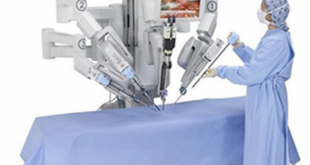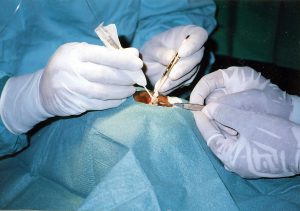Each year, more than 100,000 people in France opt for refractive surgery. The operating techniques, more or less recent, allow correcting various vision disorders: myopia, astigmatism and hyperopia.
The candidates are generally patients wearing glasses or lenses wishing to free themselves from this constraint.
Are these interventions really reliable and safe? Are there any contraindications? What criteria should be taken into account in choosing the surgeon and the clinic?
Overview of the different refractive surgery techniques
Refractive surgery, as the name suggests, corrects abnormalities related to the refraction of light in the eye.
In a normal eye, the cornea and lens alter the path of light rays to form the image on the retina.
The myopic eye, described as “too long”, forms the images in front of the retina. The hyperopic eye, too short, forms images behind the retina. Finally, the astigmatic eye presents anomalies of corneal curvature.
Glasses, lenses and the technique of refractive surgery change the path of these light rays to properly form the image on the retina.
Refractive surgery encompasses several techniques:
For mild and medium myopia
Excimer laser surgery: two techniques make it possible to modify the shape of the cornea by performing an ablation of the corneal tissue. The first, applied on the surface (surface excimer laser), is short (a few minutes) but still quite painful. The second called “intrastromal” (intrastromal laser or Lasik), is a recent technique, performed under local anesthesia and remains little painful.
These techniques have been used for a few years but their long-term effects are not yet known.
The corneal incision technique: It consists of making a deep incision in the cornea thus allowing its shape to be modified. The incisions applied in a peripheral radial manner make it possible to correct low and medium myopia with the help of basic eye surgery instrument set. Applied transversely or arcuate, they correct astigmatism.
This technique does not ensure stable correction, as long-term vision can then progress to hyperopia.
For stronger myopia and hyperopia
The intracorneal ring technique: It consists of inserting segments of synthetic rings into the thickness of the cornea and thus changing its shape.
This recent technique does not allow sufficient insight into long-term tolerance and the stability of the correction. However, the main advantage of this technique is its reversibility. The rings can be removed in the event of a complication.
The technique of intraocular implants: It allows placing refractive lenses in front of the crystalline lens and thus modifies the path of light rays.
This technique requires opening the eye and can therefore induce complications in different tissues.
Towards a new technique
The intralaser is a new technique for treating all types of myopia. This laser does not require the use of a blade to cut the cornea; the entire operation is done with a laser.
A promising technique but still too recent to provide a reliable opinion.
Is refractive surgery as effective as correction with lenses or glasses?
Some ophthalmologists agree that the best tool for correcting medium and high myopia is lenses or glasses. Indeed, for a certain category of myopic, with equal correction, a lens wearer will have better vision of contrasts and distances compared to a myopic person who has undergone an operation. However, visual acuity remains the same (ability to distinguish a small object over a fixed distance).
When to choose to have an operation?
For any surgery, it is necessary to wait until the myopia has stabilized.
Thus generally, mild (-3 diopters) and medium (-3 to 6 diopters) myopia can be operated from the age of 20 years. It takes 28 years to correct strong myopia (exceeding -6 diopters).
The risks associated with the different refractive surgery techniques
There is no guarantee in terms of the result: it depends on the healing phenomenon specific to each individual. A second procedure or additional correction (glasses, lenses) is sometimes necessary.
As with any surgery, there is no such thing as zero risk. Even if the percentage is very low, complications ranging from the most trivial to the most serious are possible.
Among the undesirable effects: the perception of halos (perception of colored halos around bright colors), a tendency to glare, reduced visual acuity, discomfort in night vision, double vision, distortion of images, a lowering of the upper eyelid. These transient or permanent complications may require medical or surgical treatment.
More serious complications leading to vision loss or eye loss can occur. These contingencies are so exceptional that their frequency is impossible to assess.
For more details, please visit: jimymedical.co.uk


